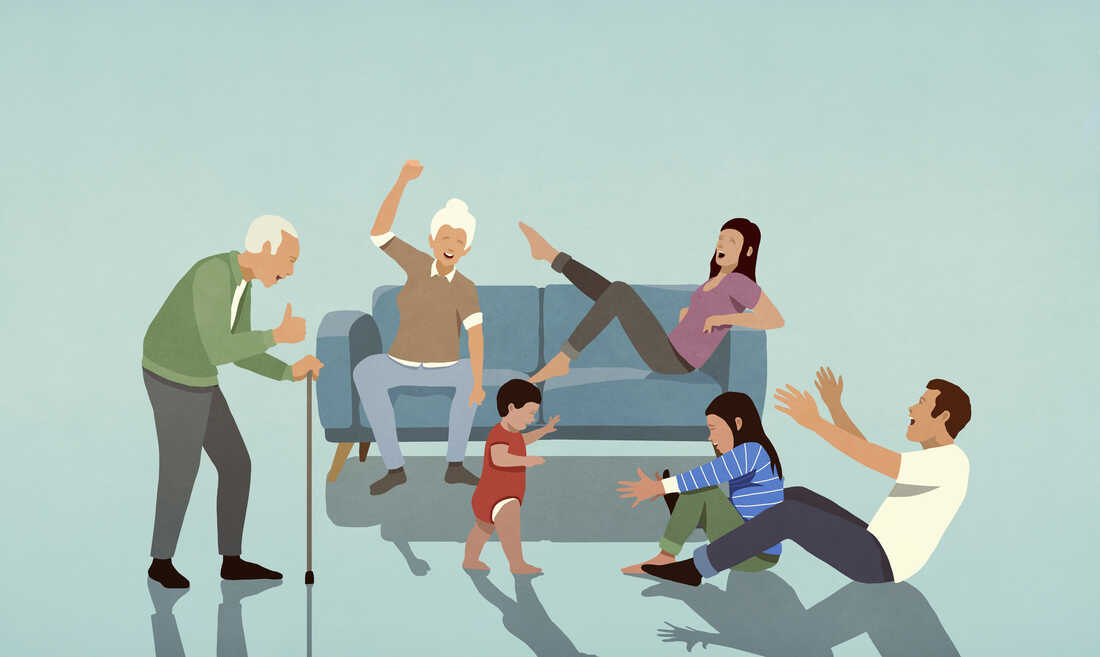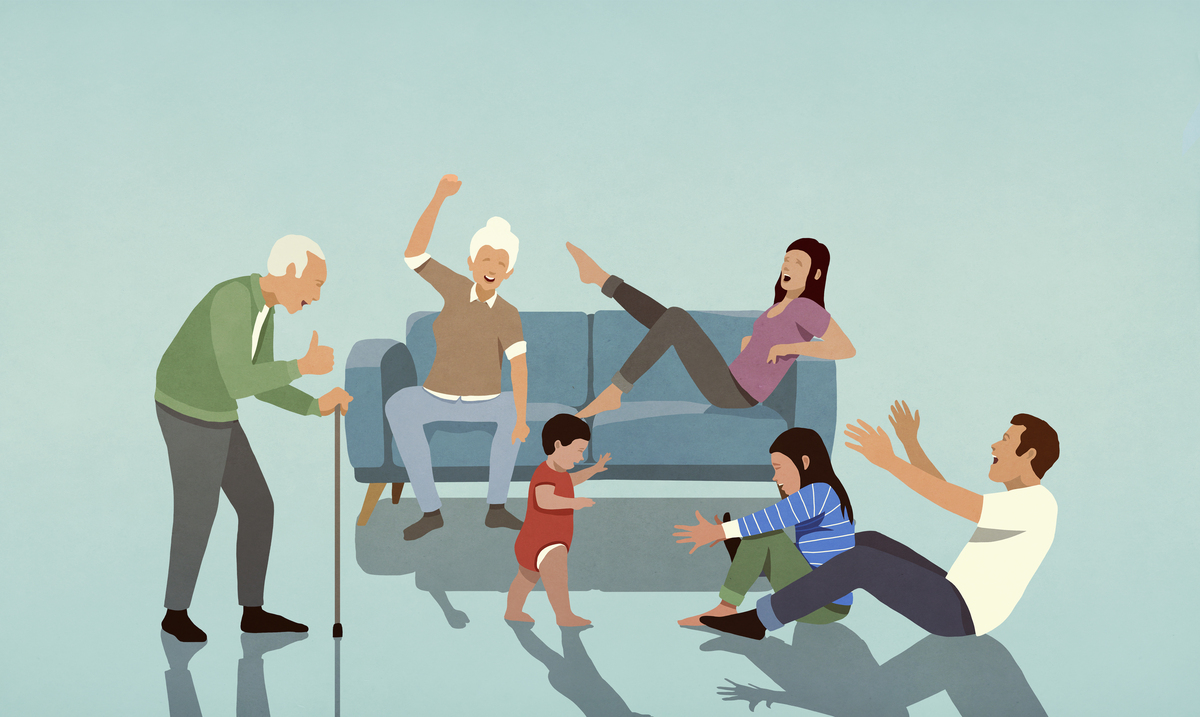
An illustration shows a multigenerational family gathered around a young grandchild. According to Pew Research, from 1971 to 2021, the number of people living in multigenerational households quadrupled Malte Mueller/Getty Images hide caption

An illustration shows a multigenerational family gathered around a young grandchild. According to Pew Research, from 1971 to 2021, the number of people living in multigenerational households quadrupled
Malte Mueller/Getty ImagesMore and more young people are moving back in with their parents — and staying there.
According to Pew Research, from 1971 to 2021, the number of adult Americans living in multigenerational households quadrupled.
There are several reasons that many young adults have moved back in with their parents, including: low pay, high housing costs, caring for loved ones – and more recently, the pandemic.
NPR's Claire Murashima spoke with a handful of young adults between the ages of 25 and 34 who are experiencing the highs and lows of living with their parents.
Email us at
This episode was produced by Karen Zamora and Claire Murashima. It was edited by William Troop. Our executive producer is Sami Yenigun.

 Live Radio
Live Radio